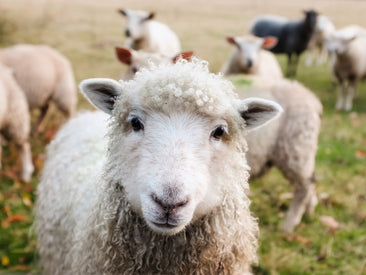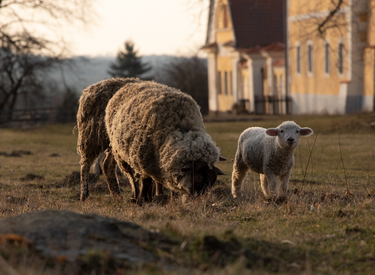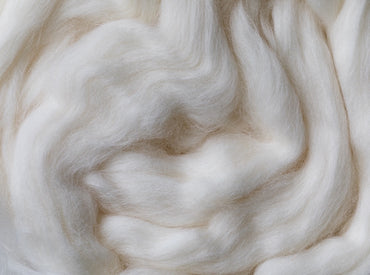Picking bedding is complicated. You have to weigh price, comfort, sustainability, and the list goes on. Plus the cost and hassle of installing new bedding makes it all the more important that you don’t pick the wrong item. I mean who wants to lug a king sized mattress through tiny apartment doors twice? The stakes are high.
While this guide doesn’t hit every aspect of every type of bedding, it does outline one important consideration when choosing your new set of sheets, pillows, or even a mattress purchase. It will help you determine the level of “synthetic-ness” of the bedding you’re considering and the pros / cons of a given material. I hope that this guide will help its readers be more conscious of the materials they sleep with 7-9 hours a night. Especially if you’re trying to live a more natural, chemical-free, life you need to understand what is in your bedroom.
Outline:
- Bedding materials that are artificial and / or synthetically produced
- Bedding materials that are natural but treated with artificial chemicals
- Bedding materials that are natural
- Pros and cons of natural materials
Bedding Materials That Are Artificial
In the realm of bedroom furnishings, synthetic materials have gained popularity due to their durability, affordability, and versatility. A lot of the big brands use some mix of synthetic materials, and that isn’t to say all are bad, but it’s important to understand what you’re sleeping on. These are the most common synthetic materials you might encounter:
- Polyurethane Foam: This is commonly used in mattresses and pillows as a comfortable and supportive filling. It can be produced in various densities and levels of firmness. Polyurethane foam is produced from the same stuff that is in polyurethane that you might use on a woodworking project.
- Polyester: Often found in bed linens and pillows, polyester is a synthetic fiber known for its softness and resistance to wrinkles. To get technical, polyester is made by taking plastic pellets and melting them and extracting them through tiny holes called spinnerets. The plastic comes out of those holes as a long fiber and cools and hardens.
- Memory Foam: Is also a type of polyurethane foam. However, unlike standard “Reflex” polyurethane foam, memory foam is denser. This gives it the quality of molding to your body.
- Synthetic Latex: Often used as an alternative to natural latex, synthetic latex can provide similar support and comfort in mattresses. Synthetic latex, like memory foam, is ultimately derived from petroleum compounds. The compounds used for latex are Styrene and Butadiene which creates a rubber known as SBR. Price is often the main driving factor for synthetic latex mattresses and beds, as it’s cheaper to artificially produce latex than harvest it from rubber trees.
Bedding Materials That Are Natural but Treated with Artificial Chemicals
The main reason why a natural material would be treated with chemical additives is so they are more flame / fire resistant. As is outlined in this post, the US Consumer Product Safety Commission (CPSC) issued a new standard that all bedding materials must be resistant to all open flame sources and that new products must be tested before entering the market.
The City of Phoenix site has a good post that outlines the differences between some natural materials and their ability to resist flames. For example, they explain that cotton, linen, and silk are more flammable. Latex is also naturally more flammable because it’s a rubber and if it does catch fire it burns very hot. Thus you are more likely to find flame retardants used on those natural materials versus something like wool or down.
Natural Bedding Materials
Natural bedding is used in mattresses, pillows, sheets and comforters and as of recently have become a lot more popular. Here’s a list of some of the more commonly used natural bedding materials:
- Wool: Is harvested wherever there are wool sheep. There are wool mattresses but it is rare so wool is mostly used in pillows. The process to get the wool ready for the pillow involves the wool going through a carting mill. The wool is cleaned in a soap bath then run through a machine that aligns the wool fibers for a consistent feel.
- Natural Latex: In most tropical regions of the world you will find rubber, latex, farms. Latex is derived from the sap of rubber trees, that sap is then foamed in order to create small pockets of air which give a pillow or mattress its bounce.
- Cotton: Cotton is grown in the southern U.S. as well as various regions around the world. There are two main stages of turning cotton into a usable fabric. The first is the spinning process, where cotton which has already been dried and separated from its seed is taken and turned into small threads. After that is completed the cotton goes through the weaving process where the threads are bound together to make sheets, pillow cases, or whatever it will be used for.
- Down: There are two main types of down. Goose down and duck down. Goose down is considered higher quality and there are specific geese breeds that are considered the best of the best. There is also what is considered a “feather pillow” which isn’t quite the same as down. Feather pillows have quills from the feathers. Furthermore the feathers that are used in “feather pillows” are typically taken from the top of the goose or duck versus the underbelly. On down comforters and pillows you will often see a number on them that denotes the fill power. The higher the fill the more loft you will get from the comforter or pillow. So a fill power of 700 will give you 700 cubic inches in loft. The more fill will also mean more warmth, which is why when you shop for a down jacket the higher fill ones are rated for lower temperatures.
Pros and Cons of Natural Materials For Bedding
Wool Pros:
- Wool, like latex, is naturally moisture resistant. Wool wicks moisture and thus is great for warmer climates and in places where mildew is a concern.
- Wool is also hypoallergenic. There is a small percentage of the population that is allergic to Lanolin, the oil in wool fibers, but it’s rare.
- Wool is supportive, in the form of a pillow. Wool mattress technology is still developing and there is a way to go to get a fully supportive wool mattress on the market but wool pillows are supportive. Look for manufactures that offer an option to choose the level of fill you want.
- Wool is naturally flame resistant so it doesn’t need to be treated with any chemical flame retardants.
Wool Cons:
- Because wool needs to be sheared by hand it can be pricier than alternatives. Also depending on the quality of the wool the price will fluctuate.
- Wool isn’t the softest filler for pillows or comforters. If you’re looking for that classic airy feel of down, you won’t get that with wool.
Companies Selling Natural Wool
Natural Latex Pros:
- Natural Latex mimics a lot of the supportive and shape adaptive properties of memory foam.
- It is naturally moisture resistant which means there will be less mold and mildew build up. This is especially helpful if you live in a warmer humid climate.
- Latex is hypoallergenic so it’s rare that you will have a reaction to a latex pillow or mattress. Also because latex is moisture resistant there is less likelihood that dust mites build up, which also can produce allergies.
- Latex is breathable. Latex’s open foam structure allows for heat to be vented away when you’re sleeping.
- Finally, latex can be quite durable. If well taken care of latex can last for quite a long time.
Natural Latex Cons:
- Because natural latex is produced by manually extracting sap from rubber trees it can be quite expensive.
- The smell of natural latex. Especially when you first get a mattress or pillow there can be a rubbery smell.
- If you like mattresses on the softer side, latex can feel firm than other mattress types and the same goes for latex pillows.
- Latex is quite heavy. This won’t be an issue with natural latex pillows but latex mattresses can be a chore to drag around. You should expect a new latex mattress to be at least 90+ lbs.
Companies selling natural latex mattresses:
Cotton Pros:
Obviously you won’t find any pure cotton mattresses, but instead cotton is most commonly used for mattress covers, pillow covers, and sheets.
- Cotton has a classic feel that most people love. But what most people don’t know is that there are dozens of types of cotton. We won’t go into all of them here, just know that the higher the thread count on cotton the more comfortable.
- Cotton, like it’s bamboo and tencel cousins is also hypoallergenic.
- Cotton is durable, especially if you opt for higher quality cotton. And unlike silk which is easily stained, cotton can more readily be cleaned.
- Cotton is generally an affordable option when looking for sheets, which is why it’s so widely used.
Cotton Cons:
- Cotton isn’t heat or flame resistant so you have to watch out and make sure it’s not been treated with a flame retardant.
- Cotton isn’t moisture wicking, so if you sleep hot it’s better to not surround yourself with only cotton.
Companies selling cotton sheets:
Down Pros:
- Down has an unmistakable feel compared to other fillers. It’s light, soft, and airy. As was mentioned above, make sure to look for 100% goose down with high fill counts for pillows and comforters that really maximize that feel.
- Down is generally hypoallergenic. There are people with down allergies, but like with wool it’s rare.
- Down is flame resistant. Down feathers are naturally flame resistant so it’s less likely that you’ll find a manufacturer who has treated their down with artificial chemicals.
Down Cons:
- Down can be quite expensive, especially if you go for goose down.
- Down isn’t the most supportive material if you’re looking for a pillow that has a firmness to it.
Companies Selling Natural Down:


